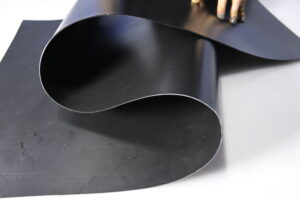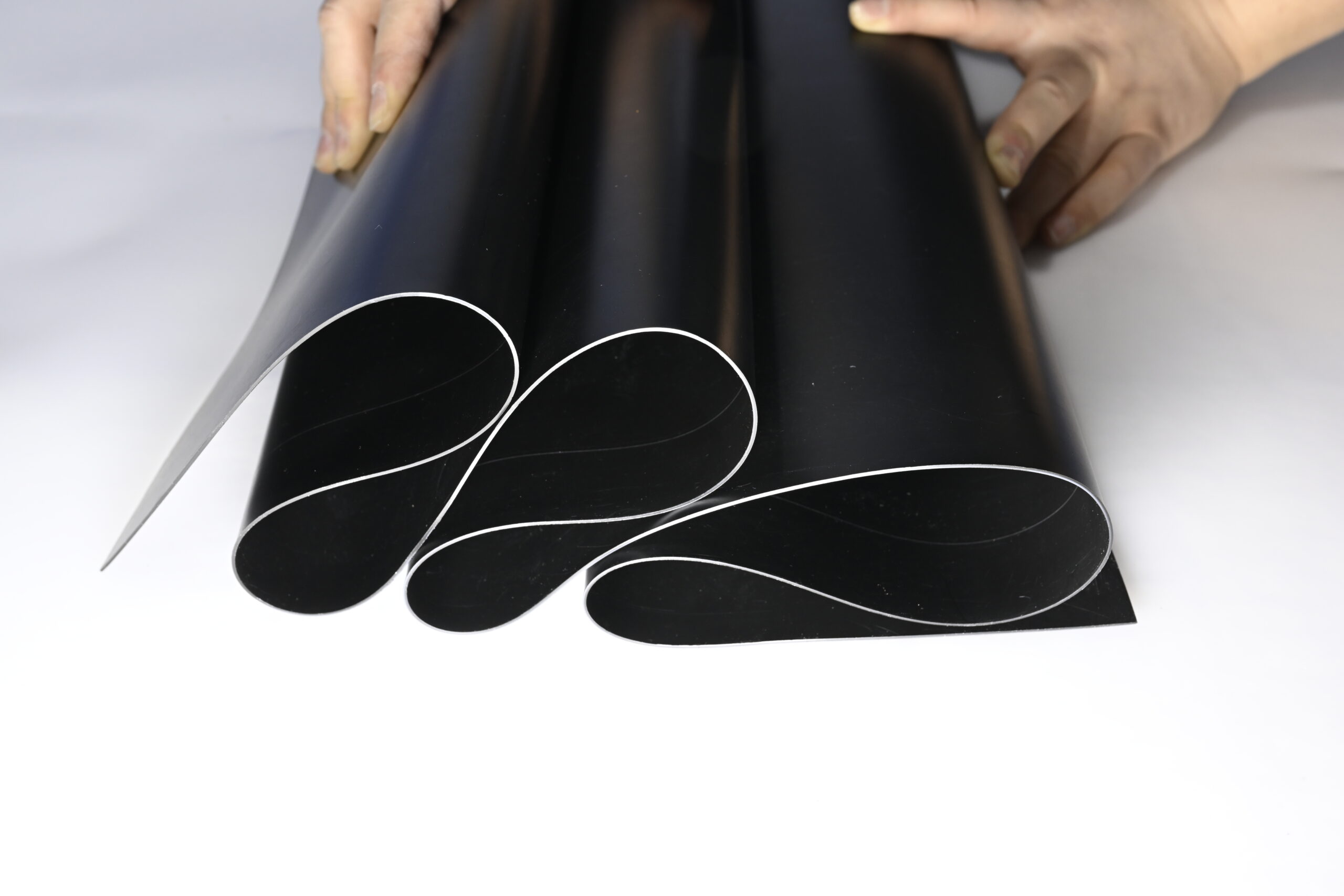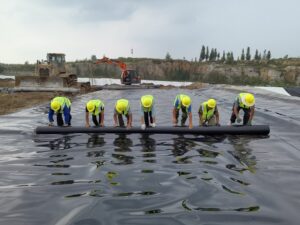Hdpe geomembrane installation: The Importance of Proper Seaming and Welding Technique
Geomembranes are often used in landfills, mining operations, and other containment applications. They are available in a variety of thicknesses and must be heat welded or glued together to create a watertight seal. When installed properly, geomembranes can provide an effective barrier against liquids and other contaminants. However, improper seaming and welding can result in leaks and environmental damage. In this blog post, we’ll take a closer look at the importance of proper seaming and welding techniques when installing geomembranes.
Types of geomembrane seams and welding techniques
Geomembrane seams are the most important component of waterproofing projects, as it is crucial to ensuring a strong and reliable seal. There are two types of geomembrane seams: homogeneous and heterogeneous. Homogeneous seams involve overlapping pieces of the same material and utilize hot-air or extrusion welding techniques that melt both layers together. Heterogeneous seams involve overlapping two pieces of different materials, usually using contact and/or impingement welding techniques that bond different layers by heat or pressure. Specialized machine welding can be used to provide consistent quality at larger-scale projects. Hot wedge or hot gas welding creates a welded joint with the highest strength, which can be applied onsite, making it an ideal choice for quick installation on some complex applications. Ultimately, careful consideration should be taken when selecting geomembrane seams and their welding techniques – as the durability of a waterproofing project depends upon them!

Factors affecting the quality of hdpe geomembrane specifications seams and welding
Geomembrane seams and welding represent highly critical components within the industry due to their flat, seam-welded surfaces providing almost impermeable barriers. The quality of these seams heavily affects the success of installations, as it influences product longevity and necessary performance levels. Factors that impact the quality of geomembrane seams and welding include human error, selecting and using unsuitable materials, improper installation techniques, extreme weather conditions such as ultraviolet radiation, and temperature/humidity fluctuations, among many others. Installing a high-quality seam is essential for any successful project; thus, future geosynthetics applications should give particular attention to ensuring high quality when welding together two panels.
The impact of improper seaming and welding on hdpe geomembrane liners performance
Poor seaming and welding of geomembrane materials can have a devastating impact on their performance and consequently the overall effectiveness of a system. Not only may this result in long-term problems such as leakage, shrinkage, and mechanical damage, but it can also render the membrane completely unsuitable for the purpose intended. When assembling geomembranes or other related products, extreme care must be taken to ensure that every joint is properly sealed to prevent weakening due to moisture infiltration. Welds should be checked carefully to ensure that they do not exceed material thicknesses or widths, and if possible all welding should be done by qualified personnel. In doing so, proper seaming and welding protocols will help minimize costly repairs down the line and extend the lifespan of your geomembrane system.
The role of proper seaming and welding in ensuring long-term containment
Seaming and welding are essential processes for ensuring that long-term containment is achieved where necessary. Seaming involves the use of bonding techniques to join two parts together in such a way that a continuous and unobstructed connection is formed. Welding, on the other hand, is the process by which two pieces of metal are joined together using high temperatures, usually produced with an electron beam, laser, or ultra-violet light. Both processes allow professionals to create customized shapes necessary for specific task requirements and eliminate chances of leakage based on environmental stresses, pressure, or other conditions. When properly used for long-term containment purposes, seaming, and welding provide added stability as well as a greater level of safety than would be found with traditional methods.
Best practices for hdpe geomembrane sheets seaming and welding, including quality control measures
When it comes to seaming and welding geomembrane liners, there are several best practices to employ in order to ensure a successful installation. Seam and weld design should take into account the application requirements as well as local construction regulations such as safety and environmental laws. Furthermore, proper surface preparation is essential for optimal seaming and welding performance. Attention should be paid to the selection of appropriate materials, ensuring sufficient overlap widths, use of liners with similar properties, and temperature control in order to obtain appropriate finish parameters. Quality control measures are also a crucial element for any successful geomembrane installation project; these should include inspections at critical stages throughout the process (e.g., before installation begins, during production, and upon completion). In addition, an experienced contractor familiar with current technologies and processes is necessary to guide the selection and implementation of best practices in geomembrane installations.
The importance of trained and certified personnel in hdpe geomembrane seaming and welding
Having trained and certified personnel for geomembrane seaming and welding is essential. It’s essential to ensure the highest quality of the weld seam, which will result in secure containment of any hazardous materials that may exist in the contained area. It’s also essential for ensuring long-term liner integrity which helps to avoid future remediation jobs. Trained professionals not only keep workers accountable but also make sure that proper precautions are taken when creating an effective and reliable welded or sealed joint. This includes making sure that all seams are smooth with no wrinkles or overlaps, as well as a consistent heat seal throughout the welding element. Professionalism and expertise go a long way in geomembrane seaming and welding, so having a team of highly trained and certified personnel is crucial for achieving optimal results.
The use of technology and equipment in geomembrane seaming and welding
Geomembrane seaming and welding are critical steps in the containment of liquids and other hazardous materials, so it’s important to use reliable technology and equipment. The most common type of weld used for geomembranes is known as hot-air or impulse welding. This involves using heat to join the material together, creating a strong bond at the interface. It takes precision machinery to ensure that both sides are evenly heated in order to create a proper seal. Additionally, experienced technicians must be able to monitor and adjust the temperature as necessary during these welding processes. While traditional hand‐held welding tools may still be used, more sophisticated tools such as automated seamers are becoming increasingly popular due to their efficiency in producing seamless connections. Ultimately, when it comes to geomembrane seaming and welding, utilizing modern technology and equipment that has been approved by the relevant authority is an absolute necessity.
The benefits of using high-quality materials in hdpe geomembrane seaming and welding
Using high-quality materials for geomembrane seam welding and seaming is an important factor when considering the integrity of geosynthetic systems. Such materials provide a strong seal, ensuring that even under intense sunlight, temperature shifts, and harsh weather conditions, the connection between various geomembranes stays intact. Properly sealed seams also increase the life of a geosynthetic liner system, ultimately leading to cost savings on maintenance and repair by avoiding future fugitive material contamination that could have occurred if lesser quality materials had been selected. In addition, using high-quality seaming and welding materials can reduce installation time significantly when compared with inferior products which are easily damaged in their assembly. In conclusion, investing in state-of-the-art material for geomembrane seam welding and seaming provides superior protection against all elements – ultimately creating a heightened level of safety at your work site.
Common problems associated with geomembrane seaming and welding and how to avoid them
When it comes to geomembrane seaming and welding, common problems can arise during each stage of the process: preparation, shipping, unrolling, installation, inspection, sealing, and sustainable performance. To ensure proper geomembrane deployment, a quality control examination should be performed during every phase. Common issues such as poor tensioning or wrinkling of material during installation can lead to a compromised water or chemical barrier that usually results in system failure. Additionally, for heat-welded seams and overlaps great accuracy is critical since improper overlaps or faulty weld patterns can cause future leakage due to pinholes or inadequate fusion points. Ultimately these common issues are avoidable if proper technique and materials are used throughout the entire process from start to finish.
Future developments in hdpe geomembrane sealing and welding techniques
Geomembrane sealing and welding techniques have evolved greatly in recent years, and future developments promise to bring even greater advances in the technology. New methods for geomembrane production are taking advantage of revised layering materials, and advanced high-frequency electrical systems are revolutionizing how high-stress welds are formed. Experiments on various polymeric film membranes have led to a better understanding of how to combine specific elements that create tight seals that remain durable for long periods of time with minimal maintenance. While there’s still much work to be done, these new advancements provide exciting possibilities for increasing the lifespan of geomembranes and making them more cost-effective in the long run.
In conclusion, it is evident that proper seaming and welding of geomembranes is critical to the success of any containment project. There are a variety of factors that can affect the quality of seams and welds, and it is important to be aware of these factors in order to produce high-quality seams and welds. Improper seaming and welding can have a negative impact on the performance of geomembranes, so it is important to follow best practices for seaming and welding. Trained and certified personnel are essential for carrying out proper seaming and welding, as well as for ensuring the quality of the final product. Technology and equipment play an important role in geomembrane seaming and welding, and using high-quality materials is also crucial. Finally, it is important to be aware of common problems associated with geomembrane seaming and welding in order to avoid them.
Author

Founded in 2002, Tinhy's team focuses on the manufacturing, marketing, installation, application and research and development of geosynthetic materials.
View all posts





